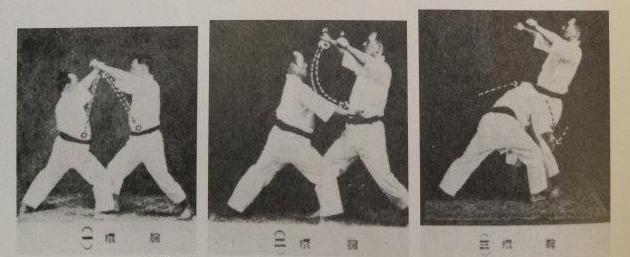dancingalone
Grandmaster
I was first told it was a block (like blocking a chair), throw the object off, then double hammer fist strike to the kidneys, then a jumping punch.
Later, I was shown that was a trapping of a double wrist grab, locking the wrists and elbows, and then a knee to the solar plexus, ending with a punch to the face.
One application my Matsubayashi sensei taught for this was a basic collar tie up or clinch. The morote tsuki is the advancement of control over uke where you now have both arms in the v-shape of his frame. Then instead of a reverse punch (jumping punch) as in Shotokan or TSD, we ended up in a side punch from a horse stance before turning to the rear into manji uke or swastika block before finishing the sequence with a very obvious shoulder throw. Manji uke is the set up for the throw.

